History
Boeing was incorporated in Seattle, Washington by William E. Boeing, on July 15, 1916, as “Pacific Aero Products Co.” following the June 15, 1916 maiden flight of one of the two “B&W” seaplanes built with the assistance of George Conrad Westervelt, a U.S. Navy engineer. On May 9, 1917, the company became the “Boeing Airplane Company”. William E. Boeing had studied at Yale University and worked initially in the timber industry, where he became a rich man and acquired knowledge about wooden structures. This knowledge would prove invaluable in his subsequent design and assembly of airplanes.
In 1927, Boeing created an airline, named Boeing Air Transport (BAT). A year later, BAT, as well as Pacific Air Transport and Boeing Airplane Company merged into a single corporation. The company changed its name to United Aircraft And Transport Corporation in 1929 and acquired Pratt & Whitney, Hamilton Standard Propeller Company, and Chance Vought. United Aircraft then purchased National Air Transport in 1930. The Air Mail Act of 1934 prohibited airlines and manufacturers from being under the same corporate umbrella, so the company split into three smaller companies - Boeing Airplane Company, United Airlines, and United Aircraft Corporation, the precursor to United Technologies. As a result, William Boeing sold off his shares.
Shortly after, an agreement with Pan American World Airways (Pan Am) was reached, to develop and build a commercial flying boat able to carry passengers on transoceanic routes. The first flight of the Boeing 314 Clipper was in June 1938. It was the largest civil aircraft of its time, with a capacity of 90 passengers on day flights, and of 40 passengers on night flights. One year later, the first regular passenger service from the US to the UK was inaugurated. Subsequently other routes were opened, so that soon Pan Am flew with the Boeing 314 to destinations all over the world.
In 1938, Boeing completed work on the Model 307 Stratoliner. This was the world’s first pressurized-cabin transport aircraft, and it was capable of cruising at an altitude of 20,000 feet. — above most weather disturbances.
During World War II, Boeing built a huge number of bombers. Many of the workers were women whose spouses had gone to war. In the beginning of March 1944, production had been scaled up in such a manner that over 350 planes were built each month. To prevent an attack from the air, the manufacturing plants had been covered with greenery and farmland items. During these years of war the leading aircraft companies of the US cooperated. The Boeing-designed B-17 bomber was assembled also by Lockheed Aircraft Corp. and Douglas Aircraft Co., while the B-29 was assembled also by Bell Aircraft Co. and by Glenn L. Martin Company.
After the war, most orders of bombers were canceled and 70,000 people lost their jobs at Boeing. The company aimed to recover quickly by selling its Stratocruiser, a luxurious four-engine commercial airliner developed from the B-29. However, sales of this model were not as expected and Boeing had to seek other opportunities to overcome the situation. The company successfully sold military aircraft adapted for troop transportation and for aerial refueling.
1950s
In the mid-1950s technology had advanced significantly, which gave Boeing the possibility to develop and manufacture totally new products. One of the first was the guided short-range missile used to intercept enemy aircraft. At that time the Cold War had become a fact to live with, and Boeing used its short-range missile technology to develop and build an intercontinental missile.
In 1958, Boeing began delivery of its 707, the United States' first commercial jet airliner, in response to the British De Havilland Comet, French Sud Aviation Caravelle and Soviet Tupolev Tu-104 'Camel'; which were the world’s first generation of commercial jet aircraft. With the 707, a four-engine, 156-passenger airliner, the US became leaders in commercial jet manufacture. A few years later, Boeing added a second version of this aircraft, the 720 which was slightly faster and had a shorter range. A few years later, Boeing introduced the 727, another commercial jet airliner of similar size, which had however three engines and was designed for medium-range routes. The 727 was immediately well accepted as a comfortable and reliable aircraft by passengers, crews, and airlines. Although production was discontinued in 1984, at the turn of the millennium nearly 1,300 727s were still in service at airlines around the world.
1960s
Piasecki Helicopter was acquired by Boeing in 1960, and was reorganized as Boeing's Vertol division. The twin-rotor CH-47 Chinook, produced by Vertol, took its first flight in 1961. This heavy-lift helicopter remains a work-horse vehicle up to the present day. In 1964, Vertol also began production of the CH-46 Sea Knight.
In 1967, Boeing introduced another short- and medium-range airliner, the twin-engine 737. It has become since then the best-selling commercial jet aircraft in aviation history. The 737 is still being produced, and continuous improvements are made. Several versions have been developed, mainly to increase seating capacity and range.
The roll-out ceremonies for the first 747-100 took place in 1968, at the massive new factory in Everett, about an hour's drive from Boeing's Seattle home. The aircraft made its first flight a year later. The first commercial flight occurred in 1970. The 747 has an intercontinental range and a larger seating capacity than Boeing's previous aircraft.
Boeing also developed hydrofoils in the 1960s. The screw driven USS High Point (PCH-1) was an experimental submarine hunter. The patrol hydrofoil USS Tucumcari (PGH-2) was more successful. Only one was built, but it saw service in Vietnam and Europe before running aground in 1972. Its innovative waterjet[citation needed] and fully submersed flying foils were the model for the later Pegasus class patrol hydrofoils and Jetfoil ferries in the 1980s. The Tucumcari and later boats were produced in Renton. While the Navy hydrofoils were withdrawn by the end of the 1980s, the swift and smooth Boeing Jetfoils are still in service in Asia.
1970s
In the beginning of the 1970s, Boeing faced a new crisis. The Apollo program in which Boeing had participated significantly during the preceding decade was almost entirely cancelled. Once more, Boeing hoped to compensate sales with its commercial airliners. At that time, however, there was a heavy recession in the airlines industry so that Boeing did not receive one single order for more than one year. Boeing’s bet for the future, the new 747 was delayed in production and engendered much higher costs than had been forecast. Another problem was that, in 1971, the U.S. Congress decided to stop the financial support for the development of the supersonic 2707, Boeing’s answer to the British-French Concorde, forcing the company to discontinue the project. The company had to reduce the number of employees from over 80,000 to almost half, only in the Seattle area. In January 1970 the first 747, a four-engine long-range airliner, flew its first commercial flight. This famous aircraft completely changed the way of flying, with its 450-passenger seating capacity and its upper deck. Until 2001, Boeing had been the only aircraft manufacturer to offer such an airliner and has delivered near to 1,400 units. (Airbus now offers the A380, which when delivered will be the largest operational airliner). The 747 has undergone continuous improvements to keep it technologically up-to-date. Larger versions have also been developed by stretching the upper deck. During the 1970s, Boeing also developed light rail vehicles which were used in San Franciso and Boston. They were a limited success as different models would be chosen to replace them by the 2000s.
1980s
In 1983, the economic situation began to improve. Boeing assembled its 1,000th 737 passenger airliner. During the following years, commercial aircraft and their military versions became the basic equipment of airlines and air forces. As passenger air traffic increased, competition was harder, mainly from a European newcomer in commercial airliner manufacturing, Airbus. Boeing had to offer new aircraft, and developed the single-aisle 757, the larger, twin-aisle 767, and upgraded versions of the 737. An important project of these years was the Space Shuttle, to which Boeing contributed with its experience in space rockets acquired during the Apollo era. Boeing participated also with other products in the space program, and was the first contractor for the International Space Station. At the same time, several military projects went into production, the Avenger air defense system and a new generation of short-range missiles. During these years, Boeing was very active upgrading existing military equipment and developing new ones.
[edit] 1990s
In April 1994, Boeing introduced its most modern commercial jet aircraft, the twin-engine 777, with a seating capacity of between 300 and 400 passengers in a standard three class layout, in between the 767 and the 747. The longest range twin-engined aircraft in the world, the 777 was the first Boeing airliner to feature a "fly-by-wire" system and was conceived in response to the inroads being made by the European Airbus into Boeing’s traditional market. This aircraft reached an important milestone by being the first airliner to be designed entirely by using CAD techniques. Also in the mid-1990s, the company developed the revamped version of the 737, known as the “Next-Generation 737”, or 737NG. It has since become the fastest-selling version of the 737 in history, and on April 20, 2006 sales passed those of the 'Classic 737', with a follow-up order for 79 aircraft from Southwest Airlines. The “Next-Generation 737” line includes the 737-600, the 737-700, the 737-800, and the 737-900.
In 1996, Boeing acquired Rockwell’s aerospace and defense units. The Rockwell products became a subsidiary of Boeing, named Boeing North American, Inc. In August of the next year, Boeing merged with McDonnell Douglas to form The Boeing Company. Following the merger, the McDonnell Douglas MD-95 was renamed the Boeing 717, and the production of the MD-11 was limited to the freighter version. Boeing introduced a new corporate identity with completion of the merger, incorporating the Boeing logo type and a stylized version of the McDonnell Douglas symbol, which was derived from the Douglas Aircraft logo from the 1950s.
2000s
In recent years Boeing has faced an increasingly competitive Airbus, which offers some commonality between models (reducing maintenance and training costs) and the latest fly-by-wire technology. From the 1970s Airbus has increased its family of aircraft to the point where they can now offer an aircraft in almost every class Boeing does. Indeed, Airbus is now competing in markets that Boeing once had a monopoly over, e.g. the A320 has been selected by several low-cost operators (the aircraft used by these airlines has traditionally been the 737) and the very large aircraft market, the A380. The 747 has suffered by competing with Boeing’s 777-300 series.
In September 2001, Boeing moved its corporate headquarters from Seattle to Chicago.
On October 10, 2001, Boeing lost to its rival Lockheed Martin in the fierce competition for the multi-billion dollar Joint Strike Fighter contract. Boeing’s entry, the X-32, was rejected in favor of Lockheed’s F-35 entrant. The X-32 may have been hampered by the requirement for a redesign after several flaws were found in the original concept.
In 2004, Boeing cancelled production of the 757 after 1055 were produced, with the last aircraft going to Shanghai Airlines, in China. More advanced, stretched versions of the 737 were beginning to compete against the 757, and the new 787-3 will fill some of the top end of the 757 market. Also that year, Boeing announced that the 717, the last civil aircraft to be designed by McDonnell-Douglas, would cease production by 2006. The 767 is likely to cease production soon. However, if Boeing manages to win the contract for new USAF tankers, the 767 program might be saved.
Boeing continues to serve as the prime contractor on the International Space Station and has built several of the major components.
After several decades of numerous successes, Boeing lost ground to Europe’s Airbus and subsequently lost its position as market leader in 2003. Multiple Boeing projects were pursued and then canceled. The Sonic Cruiser is among these projects. The Boeing Sonic Cruiser was launched in 2001 along with a new advertising campaign to promote its new motto, "Forever New Frontiers", and rehabilitate its image. Boeing is now focused on the newly-launched 787 Dreamliner as a platform of total fleet rejuvenation, which has benefited from strong sales success at the expense of Airbus' competing offerings.
On August 2, 2005 Boeing sold its Rocketdyne rocket engine division to Pratt & Whitney.
In May 2005, Boeing announced its intent to form a joint venture, United Launch Alliance with its competitor Lockheed Martin. The new venture will be the largest provider of rocket launch services to the US government. The joint venture gained regulatory approval and completed the formation on December 1, 2006.[4]
Recently, Boeing has launched a new aircraft; the 787 Dreamliner, and four new aircraft variants; ultra-long-range 777-200LR, 737-900ER, 737-700ER and 747-8. The 777-200LR has the longest range of any commercial aircraft. The 777-200LR completed flight-testing and certification, with the first aircraft delivered to Pakistan International Airlines (PIA) in 2006. The 737-900ER will extend the range of the 737-900 to a similar range as the successful 737-800 with the capability to fly more passengers, due to the addition of two extra emergency exits. The 747-8 is a stretched version and will offer higher efficiency and longer range.
On May 1, 2006 Boeing announced that it had reached a definitive agreement to purchase Dallas, Texas-based Aviall, Inc. for $1.7 billion and retain $350 million in debt. Aviall, Inc. and its subsidiaries, Aviall Services, Inc. and ILS will become a wholly owned subsidiary of Boeing Commercial Aviation Services (BCAS). Aviall's CEO, Paul E. Fulchino will report to BCAS' General Manager/Vice President, Lou Mancini. The agreement was approved by Aviall's shareholders on September 19 and final closing was on September 20, 2006.
Unethical conduct
In May 2003 the US Air Force announced it would lease 100 KC-767 tankers to replace the oldest 136 of its KC-135s. The 10 year lease would give the USAF the option to purchase the aircraft at the end of the contract. In September 2003, responding to critics who argued that the lease was vastly more expensive than an outright purchase, the DOD announced a revised lease of 74 aircraft and purchase of 26.
In December 2003 the Pentagon announced the project was to be frozen while an investigation of allegations of corruption by one if its former procurement staffers, Darleen Druyun (who had moved to Boeing in January) was begun. The fallout of this resulted in the resignation of Boeing CEO Philip M. Condit and the termination of CFO Michael M. Sears. Harry Stonecipher, former McDonnell Douglas CEO and Boeing COO, replaced Condit.
Druyun pleaded guilty to inflating the price of the contract to favor her future employer and to passing information on the competing Airbus A330 MRTT bid (from EADS). In October 2004 she was sentenced to nine months in jail for corruption, fined $5,000, given three years of supervised release and 150 hours of community service.
In March 2005 the Boeing board forced President and CEO Harry Stonecipher to resign. Boeing said an internal investigation revealed a “consensual” relationship between Stonecipher and a female executive that was “inconsistent with Boeing's Code of Conduct” and “would impair his ability to lead the company”.[5] James A. Bell served as interim CEO (in addition to his normal duties as Boeing’s CFO) until the appointment of Jim McNerney as the new Chairman, President, and CEO on June 30, 2005.
Industrial espionage
In June 2003 Lockheed Martin sued Boeing alleging the company had resorted to industrial espionage in 1998 to win the Evolved Expendable Launch Vehicle (EELV) competition. Lockheed alleged that former employee Kenneth Branch, who went to work for McDonnell Douglas and Boeing, passed 25,000 proprietary documents to his new employers. Lockheed argued that these documents allowed Boeing to win 21 of the 28 tendered military satellite launches.
In July 2003 Boeing was penalized, with the Pentagon stripping $1 billion worth of contracts away from the company and awarding them to Lockheed. Furthermore, the company was forbidden to bid for rocket contracts for a twenty-month period which expired in March 2005.
In early September 2005 it was reported that Boeing was negotiating a settlement with the U.S. Department of Justice in which it would pay up to $500 million to cover this and the Darleen Druyun scandal.[6]
Subsidy disputes
In October 2004, Boeing filed a complaint at the World Trade Organization (WTO), claiming that Airbus had violated a 1992 bilateral accord when it received what Boeing deems as “unfair” subsidies from several European governments. Airbus retaliated by filing another complaint, contesting that Boeing had also violated the accord when it received tax breaks from the U.S. Government. Moreover, the E.U. also complained that the investment subsidies from Japanese airlines violated the accord.
On January 11, 2005 the two parties (Boeing and Airbus) agreed that they would attempt to find a solution to the dispute outside of the WTO.
However, in June 2005, Boeing and the United States government reopened the trade dispute with the WTO, claiming that Airbus had received illegal subsidies from European governments. Airbus has also retaliated against Boeing, reopening the dispute and also accusing Boeing of receiving subsidies from the US government.[7]
Product developments
Finally, Boeing achieved several consecutive successes, beginning with the formal launch of the 787 for delivery to All Nippon Airways and Air New Zealand.
Boeing also received the launch contract from the US Navy for the P-8 Multimission Maritime Aircraft, an anti-submarine warfare patrol aircraft. Several orders for the Wedgetail AEW&C airplanes are expected as well.
In November 2004, Boeing announced it will offer a cargo version of the popular 777 model, based on the 777-200LR. Boeing launched the Boeing 777 Freighter in May 2005 with an order from Air France. Other customers rumored to be interested include Lufthansa, EVA Airways, ILFC, GECAS and Emirates.
Boeing has achieved above projected orders at 404 for its 787 Dreamliner, outselling the rival Airbus A350. A large blow to Airbus came as Emirates Airlines president Tim Clark stated that his airline must be convinced that the 250 to 290-seat A350 would not repeat the “misses” by Airbus in performance and delivery. Emirates has held off ordering either airplane as it tries to convince Boeing to build a larger version of the 787, the 787-10 - which is the airline’s preferred option. Air Canada also dealt Airbus a blow by replacing its entire A330 and A340 fleet with 96 Boeing 777s and 787s.
Boeing officially announced in November 2005 that it would produce a larger version of the 747, the 747-8, in two models, commencing with a model for two cargo carriers with firm orders for the aircraft. The second model, slightly shorter than the cargo version but still longer than the 747-400, dubbed the Intercontinental, would be produced for passenger airlines that Boeing expected would place orders in the near future. Both models of the 747-8 would feature a lengthened fuselage, new, advanced engines and wings, and the incorporation of other technologies developed for the 787.
Boeing’s most successful new aircraft measured by recent orders remained the 737, for which it received orders totaling 387 new units in 2005 as reported on August 7. The 737-900ER is the largest model of the 737 line at a length of 138 feet, and the 737-700ER is the latest version of the venerable plane.
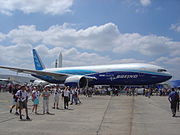
The 777-200LR Worldliner embarked on a well-received global demonstration tour in the second half of 2005, showing off its capacity to fly farther than any other commercial aircraft. On November 10, 2005, the 777-200LR set a world record for the longest non-stop flight. The plane, which departed from Hong Kong traveling to London, took a longer route, which included flying over the U.S. It flew 11,664 nautical miles (21,601km) during its 22-hour 42-minute flight.
Realizing that increasing numbers of passengers have become reliant on their computers to stay in touch, Boeing introduced Connexion by Boeing, a satellite based Internet connectivity service that promised air travelers unprecedented access to the World Wide Web. The company debuted the product to journalists in 2005, receiving generally favorable reviews. However, facing competition from cheaper options, such as cellular networks, it proved too difficult to sell to most airlines. In August 2006, after a short and unsuccessful search for a buyer for the business, Boeing chose to discontinue the service.[8][9]
Future Concepts
In May 2006, four concept designs being examined by Boeing were outlined in the Seattle Times. Codenamed after the well-known Muppets (the design team is known as the Green Team), the designs concentrated primarily on reducing fuel usage. All four designs illustrated rear-engine layouts. "Fozzie" employs open rotors and would offer a lower cruising speed. "Beaker" has very thin, wide wings, with the ability to partially fold-up to facilitate easier taxiing. "Kermit Kruiser" has forward swept wings over which are positioned its engines, with the aim of lowering noise below due to the reflection of the exhaust signature upward. "Honeydew" with its delta wing design, resembles a marriage of the flying wing concept and the traditional tube fuselage. As with most concepts, these designs are only in the exploratory stage intended to help Boeing evaluate the potentials of such radical technologies.[10]
Jeppesen International Trip Planning
On October 23, 2006, the New Yorker Magazine claimed that Jeppesen, a subsidiary of Boeing, handled the logistical planning for the CIA's extraordinary rendition flights. The claim is based on information from an ex-employee who quoted Bob Overby, managing director of the company as saying "We do all of the extraordinary rendition flights—you know, the torture flights. Let’s face it, some of these flights end up that way." The article went on to suggest that this may make Jeppesen a potential defendant in a law suit by Khaled el-Masri.[11]

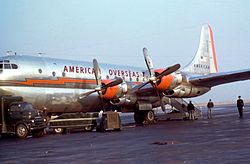
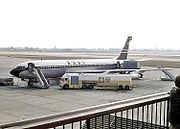




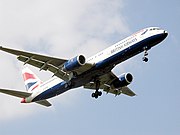



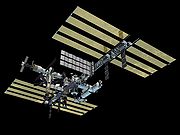


2 comments:
Hi.Good and full of information blog.Keep up your good job
Your good knowledge and kindness in playing with all the pieces were very useful.
sap training in chennai
sap training in omr
azure training in chennai
azure training in omr
cyber security course in chennai
cyber security course in omr
ethical hacking course in chennai
ethical hacking course in omr
Post a Comment